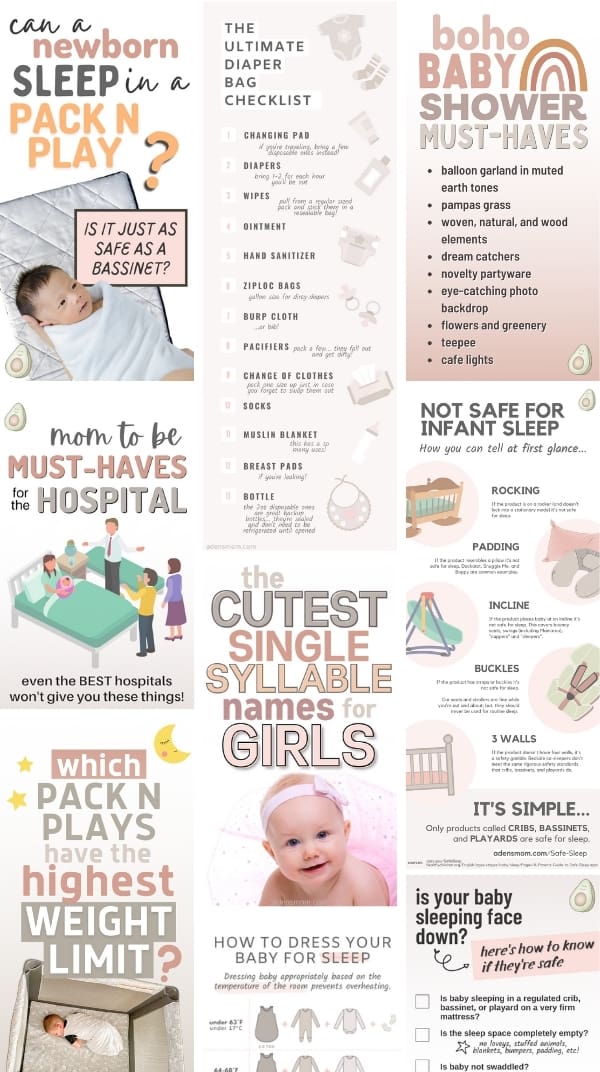Ahead: What the evidence says about preventing crib injuries.
When babies become mobile, it’s extremely common for them to hit their heads on the crib, stick their limbs through the slats, and even start chewing on the rails.
Parents are naturally worried that these behaviors will result in serious injuries.
It doesn’t help that all of this bumping, squishing, and biting tends to interfere with everyone’s sleep.
This guide is going to simplify what to do—and more importantly, what not to do—when your baby goes to battle with the crib.
And unlike the vast majority of others on the subject, this guide provides best practices based on scientific evidence, not personal anecdotes or opinions.
Here’s what we’re going to cover…
Table of Contents
Problem #1:
Baby keeps hitting their head on the crib
Problem #2:
Baby’s limbs keep getting stuck between the crib slats
Problem #3:
FAQS:
Problem #1: Baby keeps hitting their head on the crib
Parents typically have two concerns:
- If my baby hits their head on the crib, could they seriously injure themselves?
- My baby keeps hitting their head on the crib bars; how are we going to get any sleep?
Here’s the short answer on how to fix this. Afterward, we’ll talk about the evidence.
WHAT TO DO:
- Practice going from standing to sitting during the day.
- Switch to a playard (which has softer sides) until your baby is more stable.
- Do nothing. Give it time. This phase won’t last.
WHAT NOT TO DO:
- Do not add bumpers to the crib. All bumpers are a safety hazard, even the mesh ones.
- Do not come up with a “hack” or a DIY fix that involves adding anything to the crib. (We’ll talk about why in the FAQs).
Now let’s talk about why you don’t need to try to prevent your baby from hitting their head.
Afterward, we’ll talk about safe solutions more in-depth.
Or, if you’d rather, skip ahead to the next section:
What to do when baby’s limbs keep getting stuck between the crib slats
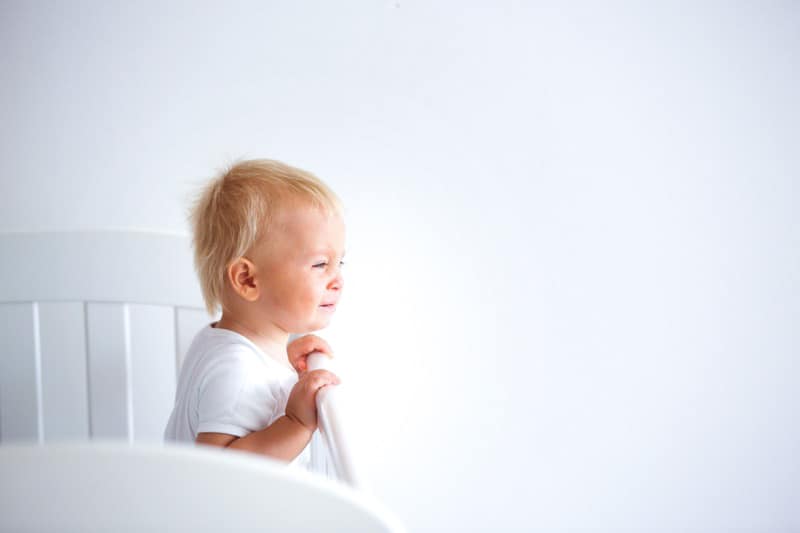
Why aren’t experts concerned about babies bumping their heads on the crib?
Young babies don’t have the strength or coordination to fling themselves across the crib hard enough to really injure themselves, according to Dr. Rachel Moon, head of the AAP’s SIDS task force.
CPSC data shows that “it is extremely rare for the contact between an infant and the sides of the crib to cause long-term injury.”
So, bumpers aren’t necessary?
Not only are bumpers unnecessary, but they’re also dangerous.
Any potential benefits of bumpers preventing minor injury are far outweighed by the risk of serious injury, which we’ll talk about next.
Why aren’t crib bumpers safe?
According to a case series that examined infant deaths caused by bumper pads, here are the 4 main things that go wrong.
- The baby’s airway is blocked by the bumper pad.
- The baby repeatedly inhales their own carbon dioxide (which collects in an air pocket of the plush bumper).
- The baby becomes wedged between the bumper and the crib rail (or another object).
- The baby is strangled by a bumper tie.
It’s also critical to note that crib bumpers can actually cause serious head injuries, instead of preventing them.
According to an AAP study,
Serious head injuries have resulted from infants climbing on a bumper and falling out of the crib.
What does the American Academy of Pediatrics have to say?
The AAP unequivocally discourages the use of all types of bumper pads.
“Because of the potential for suffocation, entrapment, and strangulation and lack of evidence to support that bumper pads or similar products that attach to crib slats or sides prevent injury in young infants, the AAP does not recommend their use.”
What about mesh bumpers and vertical crib liners?
Those are an unnecessary risk as well.
The AAP recently published the following, clarifying their position on these alternative types of bumpers:
“In addition to traditional padded bumpers, stores now sell mesh bumpers and vertical crib liners. But even these can get loose and become a strangulation risk. Babies can also get trapped between them and the crib mattress.”
They remind parents:
“There is no evidence that crib bumpers—of any kind—prevent injury in young infants.”
The AAP also continues to urge the CPSC to ban these dangerous infant sleep-related products.
(We’ll all have to stay tuned to see what happens there).
Since bumpers are out of the question, let’s break down how to safely get through this difficult head-bumping phase.
Safe solutions for babies who keep bumping their heads on the crib
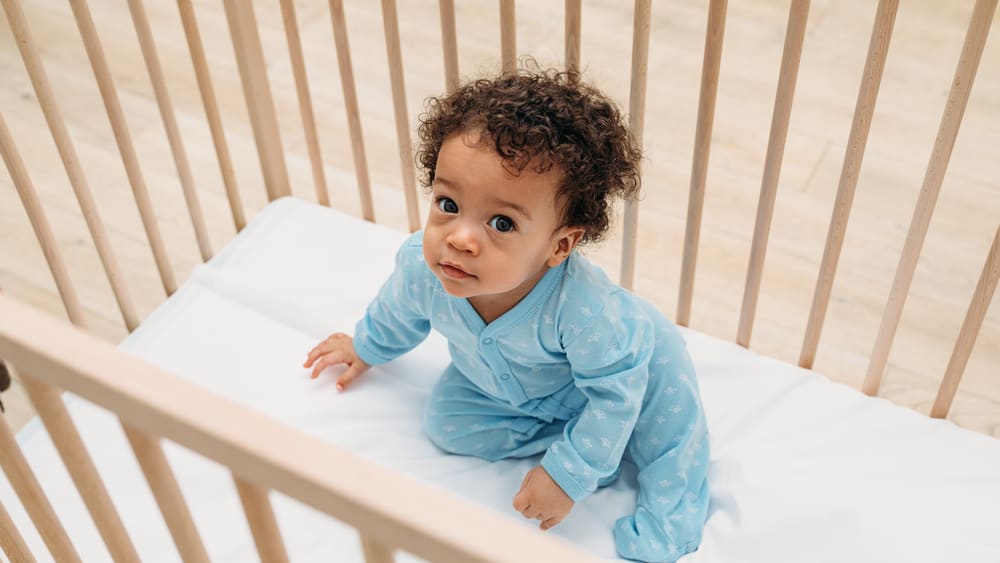
Now we’ll talk about what you can safely do when your baby is hitting their head on the crib.
If you’re painfully sleep-deprived and don’t have the luxury of patiently waiting for this phase to end, the only “quick and easy” solution is to temporarily switch to a Pack ‘n Play.
Hopefully, you already own one, but if not, it may be worth the (small) investment. You can find basic ones for as little as 45 bucks.
Since playard walls are made out of mesh, it won’t hurt if your baby falls or rolls over and hits the side.
If you don’t have a Pack ‘n Play and don’t plan to buy one, the best thing to do is accelerate your baby’s physical development by spending time during the day practicing whatever is causing them to hit their head.
Often, it’s a matter of getting better at going from standing to sitting. Sometimes, it’s about understanding the confines of the crib and being able to roll over or reposition themselves.
It’s also perfectly fine to do nothing. Most babies fix this head-bumping problem on their own.
It bears repeating that:
- This difficult phase is a short one.
- Your baby will NOT seriously injure themselves by bumping their head on the crib.
Next, we’re going to talk about a related concern, babies sticking their arms and legs through the slats.
Problem #2: Baby’s limbs keep getting stuck between the crib slats
It’s extremely common for babies to stick their chubby little arms and legs through the slats of the crib, either accidentally or intentionally.
Sometimes, they get “stuck”, and there’s usually some crying involved.
Parents typically have two concerns here:
- If my baby’s arm or leg gets stuck between the crib rails, could they seriously injure themselves?
- My baby keeps getting their limbs stuck in the crib; how are we going to get any sleep?
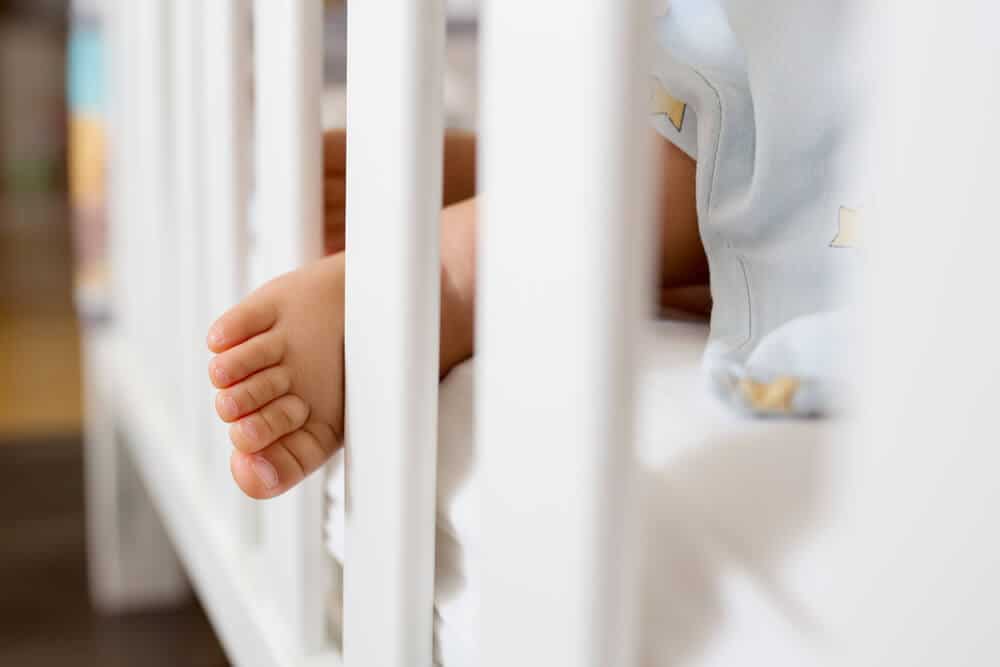
Here’s the short answer on how to fix this. Afterward, we’ll talk about the evidence.
WHAT TO DO:
- Put your baby in a sleep sack (wearable blanket).
- Allow your baby to practice rolling around in the crib during the day while you’re readily available to help.
- Switch to a playard (which doesn’t have slats) until your baby grows out of this phase.
- Do nothing. Give it time. This phase won’t last.
WHAT NOT TO DO:
- Do not add bumpers to the crib. All bumpers are a safety hazard, even the mesh ones.
- Do not come up with a “hack” or a DIY fix that involves adding anything to the crib. (We’ll talk about why in the FAQs).
Now let’s talk about why you don’t need to worry about your baby’s limbs getting stuck between the crib slats.
Afterward, we’ll talk about safe solutions more in depth.
Or, if you’d rather, click here to skip ahead to the next section:
Why aren’t experts concerned about babies’ limbs getting stuck between the crib slats?
It’s virtually impossible for babies to break a limb or sustain a serious injury by sticking their arms and legs through the crib slats.
“At most, the experience will be uncomfortable and upsetting, but not life-threatening”, says Dr. Rachel Moon, head of the AAP’s SIDS task force.
Dr. Moon reassures parents that CPSC data clearly show that infants suffer essentially no long-term injuries from contact with the crib slats themselves, making bumper pads unnecessary for infant safety.
So, are bumpers totally obsolete?
Yes.
Bumpers originally became popular because parents were worried about their babies’ heads getting stuck between the slats.
Ever since 1986, however, crib slats are required by law to be only a soda can’s width apart.
Since bumpers aren’t necessary to prevent injury of any kind—and since they pose risks of suffocation and serious injury from climbing out of the crib—there is no reason whatsoever to use them.
PIN THIS QUOTE
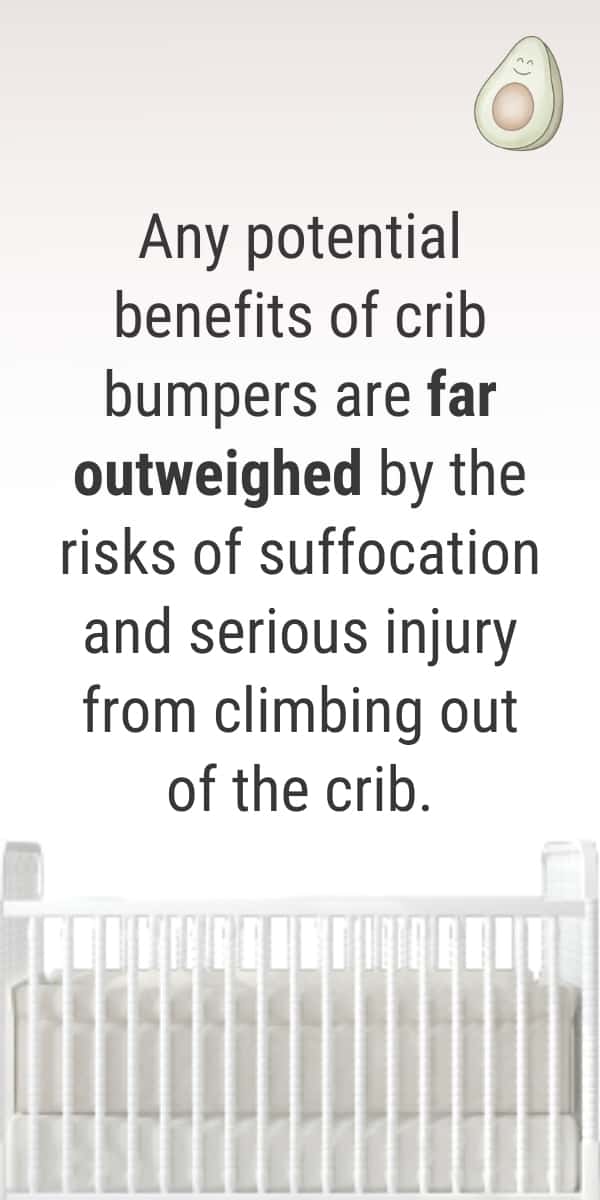
Safe solutions for babies who keep getting their arms and legs stuck
A properly fitting sleep sack is surprisingly effective at preventing an infant’s legs from getting stuck in the crib slats.
This is the simplest and most cost-effective solution, so it’s worth trying first.
If the sleep sack doesn’t do the trick—or if the problem is your baby’s arms, not legs— the next easiest solution is to switch to a Pack ‘n Play until this phase passes.
If a Pack ‘n Play isn’t an option for you, or if you’d just rather stay the course, give your baby some supervised crib time during the day where you help them practice rolling and learning the confines of the space.
It’s also fine to just wait it out.
Remember, your baby cannot seriously injure themselves inside a safe crib. And thankfully, this difficult phase is a short one.
Next, we’re going to talk about what to do when your baby is biting the crib.
Problem #3: Baby is chewing on the crib
If you’ve got a baby beaver on your hands, you’re not alone. It’s common for teething babies to chew on their cribs and even bite off small pieces of wood over time.
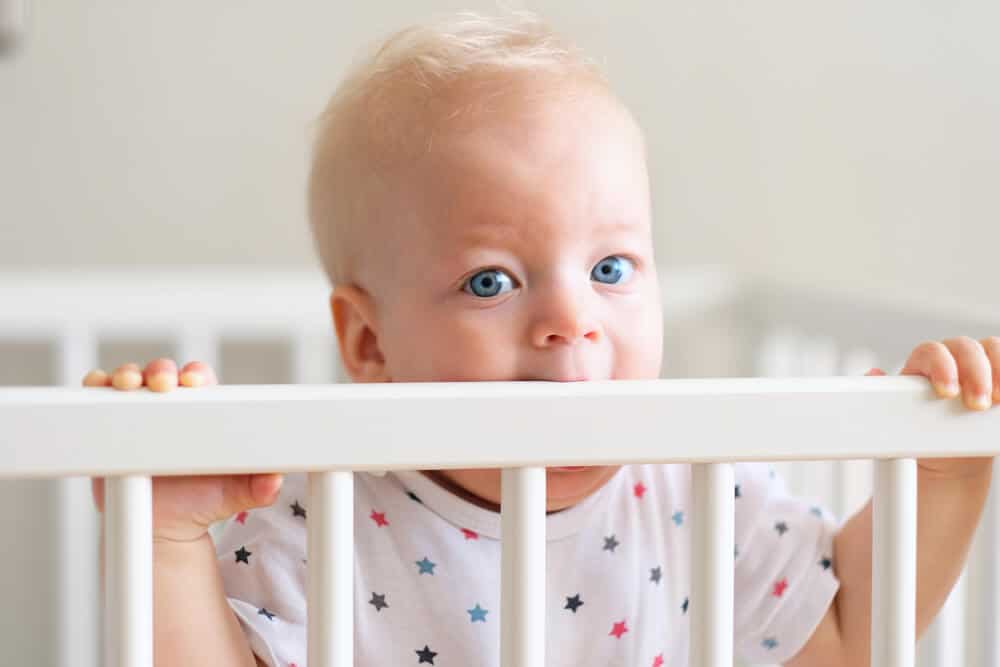
Concerned parents typically have these questions:
- Is it safe for my baby to swallow the crib paint that’s chipping off?
- Is it safe for my baby to eat the wood that they’re chewing off?
Here’s the short answer to how to handle it when your baby is biting the crib. Afterward, we’ll talk about the evidence.
WHAT TO DO:
- Give baby a pacifier—i.e. something safe to mouth. Note that a pacifier is the ONLY object that’s safe to leave in the crib.
- Limit time in the crib to when the baby is sleeping.
- Switch to a playard until your baby grows out of this phase.
- Do nothing. Give it time. This phase won’t last.
WHAT NOT TO DO:
- Do not add rail covers to the crib.
- Do not add silicon guards to the crib.
- Do not come up with a “hack” or a DIY fix that involves adding anything to the crib. (We’ll talk about why in the FAQs).
Now let’s talk about why you don’t need to be worried about your baby chewing on the crib.
Afterward, we’ll talk about safe solutions more in depth.
Or, if you’d rather, click here to skip ahead to the next section:
Why aren’t experts concerned about babies chewing on the crib?
Simply put: new cribs are safety tested for this.
Cribs sold today are required by law to comply with paint and structural integrity standards.
Do not use a crib manufactured before June 28, 2011.
Here are a few highlights of the current CPSC mandates:
- Cribs cannot be painted with paint that contains more than 0.009% lead.
- Cribs cannot contain greater than 0.01% of total lead content in any accessible component.
- Plasticized crib components cannot contain more than 0.1% of eight specified phthalates.
- All cribs must pass testing by a CPSC-accredited third-party laboratory to ensure all of the above, as well as structural testing of side rails.
According to pediatrician Dr. Katrina Leshanski, “While ingesting tiny pieces of the crib isn’t ideal, if the crib meets today’s safety standards, there isn’t a concern of toxicity.”
What if the crib is splintering and the baby is biting off large pieces of wood?
This is rare, but if the crib has started to splinter significantly, you should contact the manufacturer.
Dr. Leshanski adds,
“Kids chew because they’re bored, they’re teething, they like the feeling, or they’re just exploring their environment. Most of the time, this is perfectly normal behavior. However, if parents are concerned about aggressive chewing, it’s never a bad idea to bring this up with the child’s pediatrician.”
If the crib is splintering and you’re worried that it poses a safety risk, stop using it until you’re advised by the manufacturer whether the crib (or part of the crib) needs to be replaced.
We’re going to talk more about safe temporary fixes in just a moment.
Why aren’t rail covers safe?
The use of rail covers only substitutes one danger for another.
The main risks of rail covers attached to the crib are choking, suffocation, and strangulation.
Plastic teething rails can crack when chewed. The pieces can become lodged in an infant’s windpipe.
Fabric teething rails can be chewed and become choking hazards as well.
Not to mention, if the fabric were to come loose, it could strangle a baby and/or block their airway, much like any soft bedding in the crib.
Since crib accessories are NOT federally regulated, keep in mind that they are not required to pass CPSC accredited third-party testing.
The only exception is using a teething guard that’s built-in or came with your crib, as this has been safety tested with the crib.
The general rule of thumb is to never make crib modifications. Aftermarket products are a risk because they are untested.
What does the AAP have to say?
For unknown reasons, the AAP does not have a policy on rail covers, specifically.
That said, the AAP has consistently warned that objects in the crib are a suffocation risk.
“A large percentage of infants who die of SIDS are found with their head covered by bedding. Therefore, no pillows, sheets, blankets, or any other items that could obstruct infant breathing or cause overheating should be in the bed.” —AAP
And as noted in the previous section, the AAP has unequivocally discouraged the use of bumper pads, which are similar to rail covers in a number of ways.
Safe solutions for baby beavers
There’s not much you can do if your baby’s new hobby is chewing on the crib. Here is how to handle this (thankfully short) phase:
Minor Cases
If you’re noticing small bite marks and spots of chipped paint on the crib rails, it’s perfectly fine to do nothing.
If you want, try giving your baby a pacifier to see if having something in their mouth discourages them from chewing.
Note: Pacifiers are safe to leave in the crib, but teethers and other toys are not.
You can also do your best to limit your baby’s time in the crib to when they’re very sleepy (and sleeping, of course). When your baby wakes up, pick them up as soon as you can.
Extreme Cases
If, by chance, your baby is managing to bite off large chunks of wood (that are apparent choking hazards) the best thing to do is switch to a playard.
If you don’t already own one, you can find a basic Pack ‘n Play for around $45.
Be sure to contact the crib manufacturer, and depending on the outcome, consider filing a report with the CPSC.
Frequently asked questions (FAQs) related to common crib injuries
Is it safe to make your own crib bumpers?
As I was researching this article, I was stunned to see how many people were looking for tips for how to make crib bumpers.
Here’s the bottom line:
ALL bumpers are unsafe. Homemade bumpers are the LEAST safe.
This is because any crib bumpers you make at home have never been mass-marketed or safety tested.
** To be clear, this isn’t to say that mass-marketing and voluntary safety testing make store-bought bumpers are safe, either. **
By making your own crib bumpers (or rail covers for that matter), you are essentially using your own child as the test subject.
It doesn’t matter if you’re a wizard with a sewing machine — or if you “tested” the bumpers’ breathability by trying to breathe through it yourself — or if you tugged really hard to see if the bumpers could accidentally come loose.
Bumpers are a risk. The evidence shows that they are unnecessary and dangerous. Full stop.
Note: If you found this answer by googling “How to make crib bumpers” be sure to read the beginning of this article, which covers what to (safely) do if your baby is bumping their head on the crib or getting their limbs stuck between the railings.
Why would stores sell bumpers and rail covers if they aren't safe?
1) Money.
2) There aren’t any federal laws to prevent them from being sold.
Dr. Rachel Moon, head of the AAP’s SIDS Taskforce explains the following:
“Many parents ask me why stores that carry baby merchandise are selling so-called “dangerous” blankets and comforters, with the implied assumption that if an item were truly dangerous, then stores would stop selling it.
*
However, if “truly dangerous” were actually a criterion for determining whether or not an item should be sold, then many items no longer would be on the shelves.
*
We cannot necessarily expect merchants to stop selling an item as long as there is consumer demand for it.”
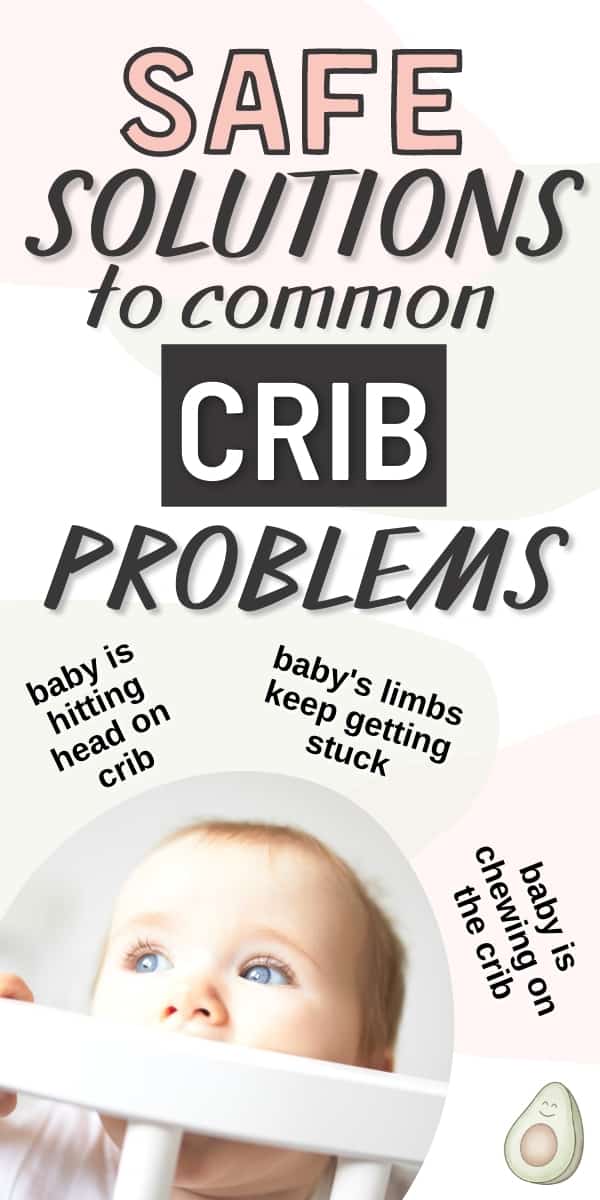
Share this post with a friend or save it on Pinterest.

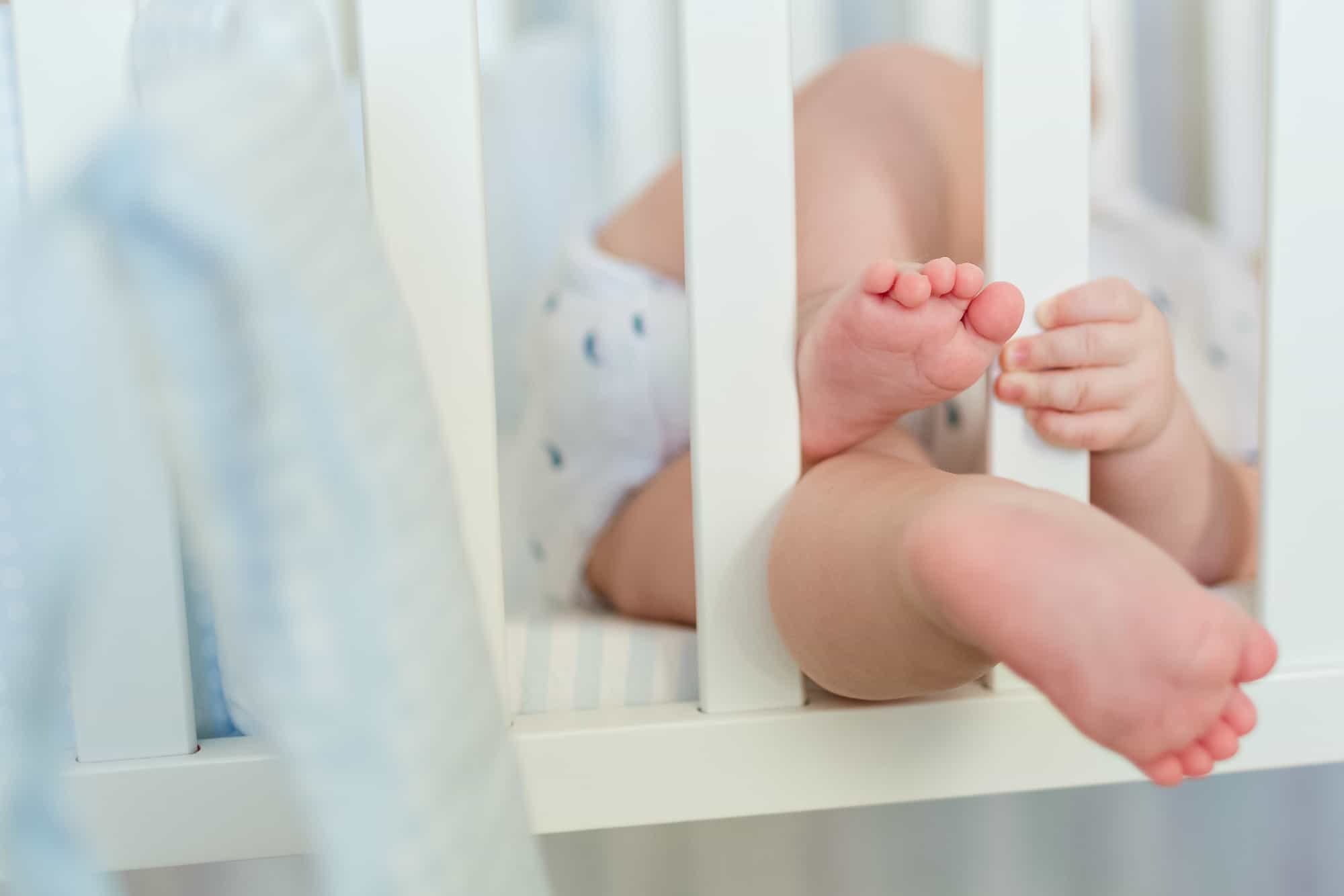
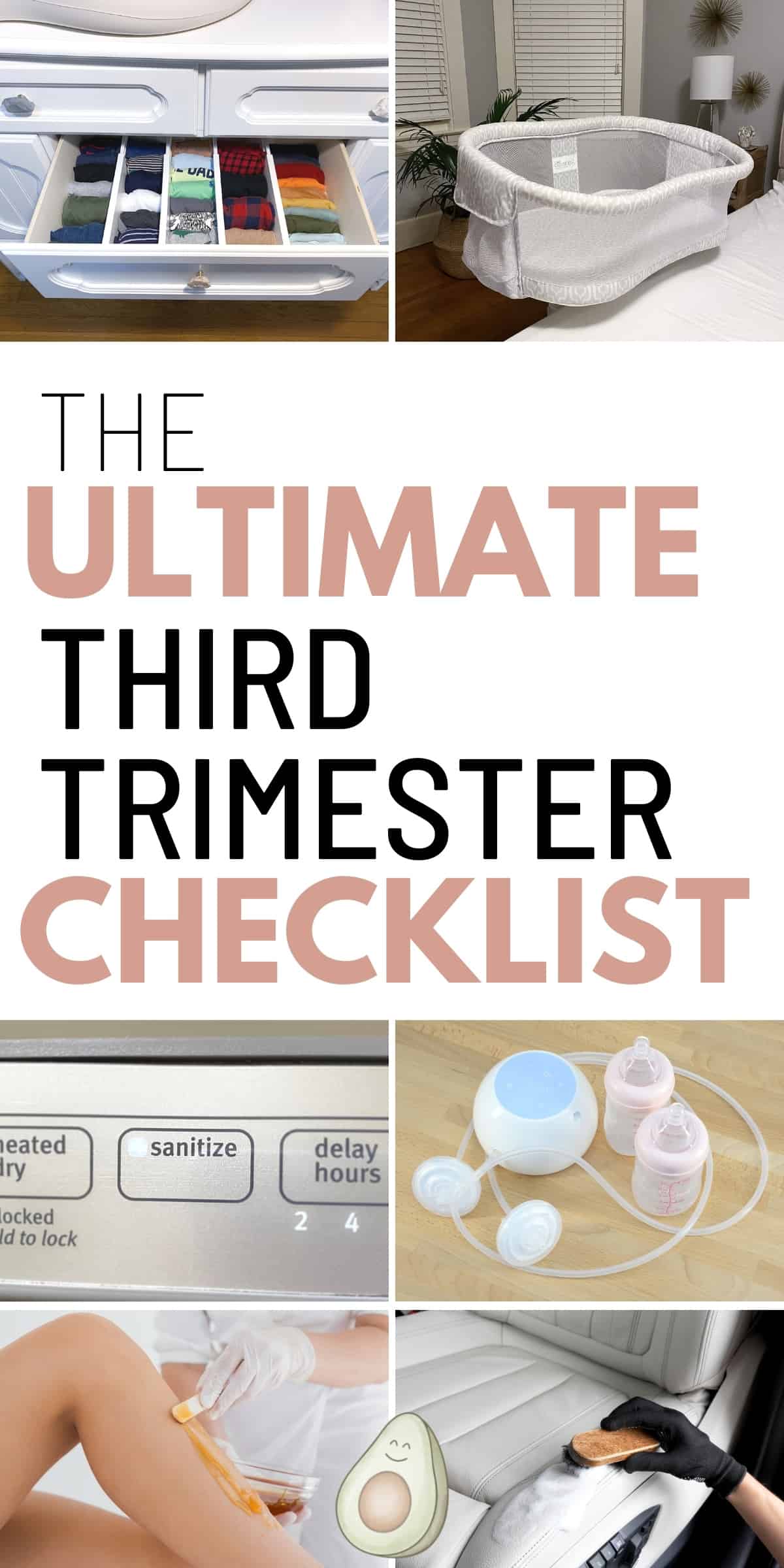
 Follow on Pinterest
Follow on Pinterest